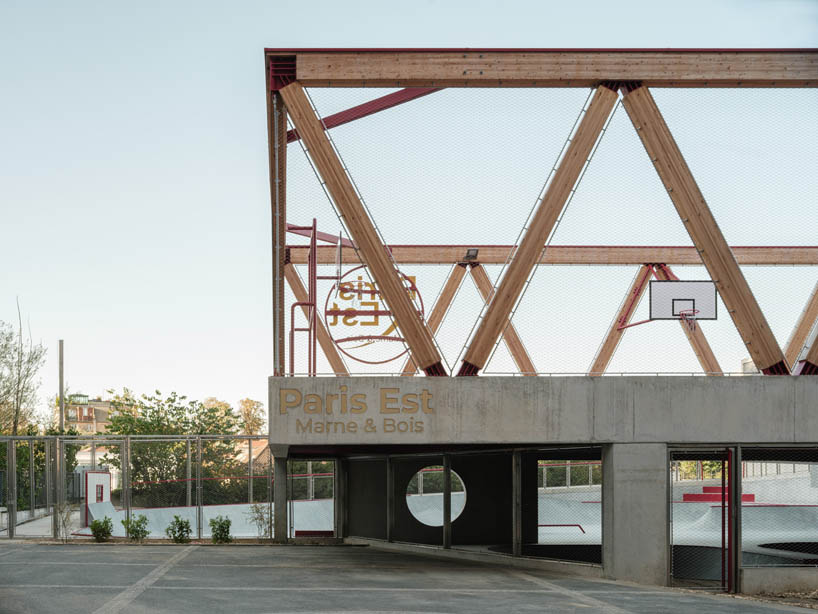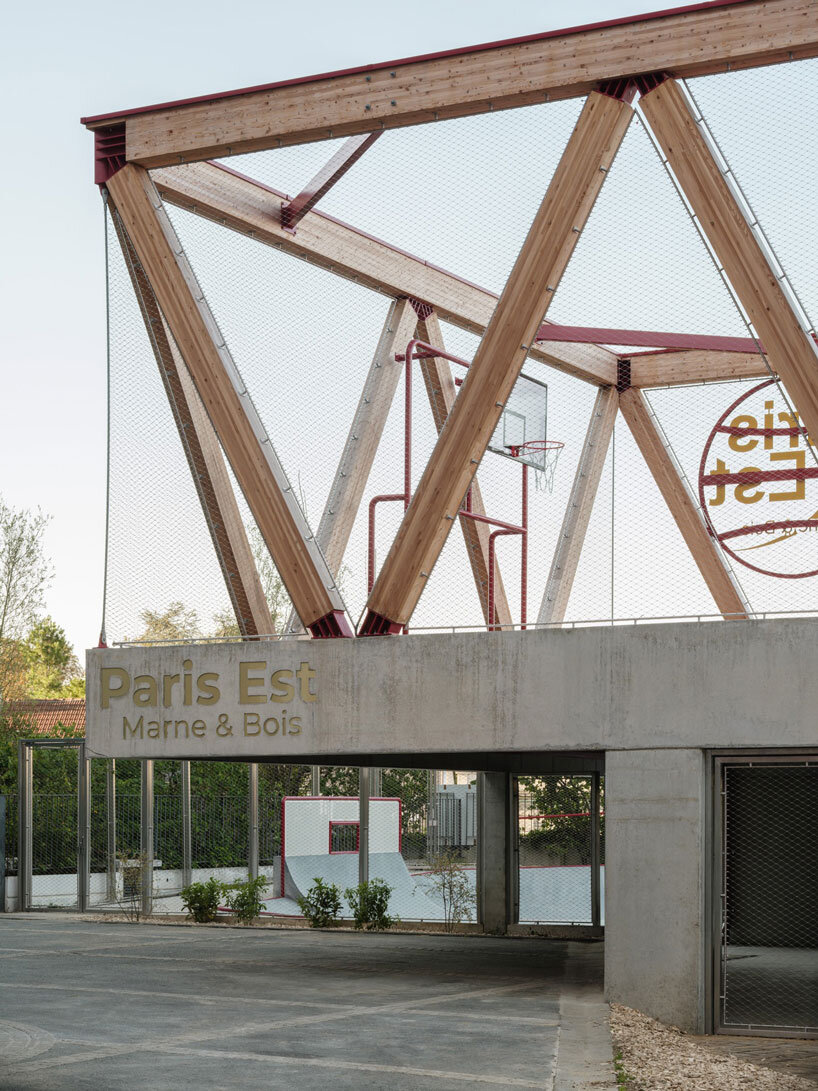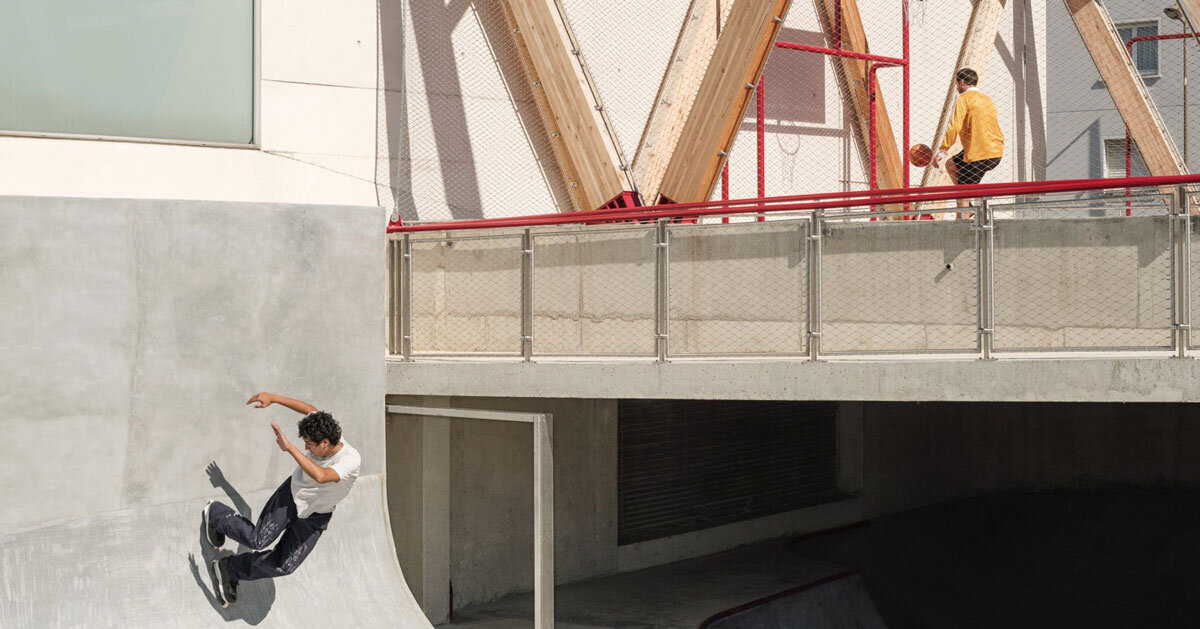Bureau FORME forms SKATE PARK AND STREETBALL COURT ALICE MILLIAT
Located along the RER A railway line at the end of Avenue des Murs du Parc in Vincennes, France, Bureau FORME’s project introduces a combined sports facility integrating urban wheeled disciplines with a multi-purpose court. Positioned beside the Vincennes ‘Dôme’ swimming complex, the site represents the final stage of a broader redevelopment of former railway land. Initially reserved for a pedestrian bridge, the plot remained unused until the PEMB authority assigned it for a neighborhood-serving sports program.
The primary design challenge was to incorporate three distinct functions within a limited footprint while maintaining coherence with the surrounding urban context. The response is organized through three spatial strategies. First, the sports court is aligned with existing building frontages, completing the urban sequence of the street. Raised three meters above ground, it generates a sheltered open-air area beneath. Second, a perimeter ramp provides universal access to the elevated court and defines a continuous wheeled-sports circuit, integrating features for roller skating, skateboarding, and BMX riding. Beneath the upper platform, a protected bowl, uncommon in the area, allows for year-round use. Third, the building’s setback creates space for a rain garden, improving ecological performance and supporting on-site water management.

all images by Giaime Meloni
Integrated Ramp Connects Skatepark and Cantilevered Court
Site constraints necessitated the vertical stacking of two programs: a multi-sports court above and a skatepark below. This arrangement produces a specific spatial condition, including the sheltered bowl. As the only element visible from the cul-de-sac, the elevated court extends the street’s frontage and forms a cantilever that signals the identity and entrance of the facility. The design by architectural practice Bureau FORME aims to create a functional yet adaptable environment, where lines, slopes, and volumes support a range of uses, from intensive physical activity to resting or viewing. Features such as low walls, stepped platforms, and the ramp itself provide opportunities for circulation, gathering, and informal occupation. These elements allow the facility to accommodate varied practices and patterns of use over time.
The project also connects to Vincennes’ network of local associations involved in cultural and sporting activities, providing an additional venue for everyday participation and community events. This relationship embeds the facility within its immediate social context rather than treating it as a standalone structure. Accessibility requirements are addressed through the continuous ramp, avoiding the need for an external lift. This route links the ground level to the court while integrating skatepark elements into its geometry. Along the ascent, users encounter different configurations: guardrails that function as coping bars, openings for rest points, and surfaces that support riding. The gradual rise offers views of both the multi-sports court and the skatepark below. Beyond its technical components, the project contributes to the organization of public space by establishing clear routes, shared vantage points, and collective activity areas. Through these strategies, the facility supports mixed use, overlap between different user groups, and flexible patterns of occupation within the urban setting.

combined wheeled-sports and multi-purpose court in Vincennes

the facility sits alongside the RER A railway line

